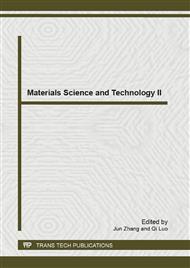p.475
p.482
p.485
p.490
p.497
p.505
p.510
p.516
p.521
Study of the Parameters Dispersion Effect in Photovoltaic Systems, in Terms of the Coveragetype
Abstract:
In this work, was considered the thesis that the optic properties of anti-reflecting and the satin-like glasses can improve the efficiency of solar panels that use plastic covertures or conventional glasses as coverage. The infrared radiation that is not turned into electricity with the conventional photovoltaic cells, increments the panel surface temperature, of the supporting structure and of the photovoltaic cells. For above 35oC it is possible that some cells stop converting the visible light in electricity due toparameters dispersion effect, with this, the efficiency of electric generation is diminished. In the electromagnetic spectrum, the wavelength of infrared radiation is since 800nm, the anti-reflecting glasses transmittance is since430 to 680 nm, while the satin-like glassestransmittance issince 500 to 600nm, therefore for thiscause the infrared transmittance is not observed. In this work, it was proved that the use of anti-reflecting glasses and satin-like glasses improves the conventional solar panels efficiency. The results suggest an efficiency of 31.6 % of solar energy conversion with the anti-reflecting glass, and 36% with the satin-like glass, when these were used as cover panel photovoltaic.
Info:
Periodical:
Pages:
497-501
Citation:
Online since:
July 2013
Keywords:
Price:
Сopyright:
© 2013 Trans Tech Publications Ltd. All Rights Reserved
Share:
Citation:


